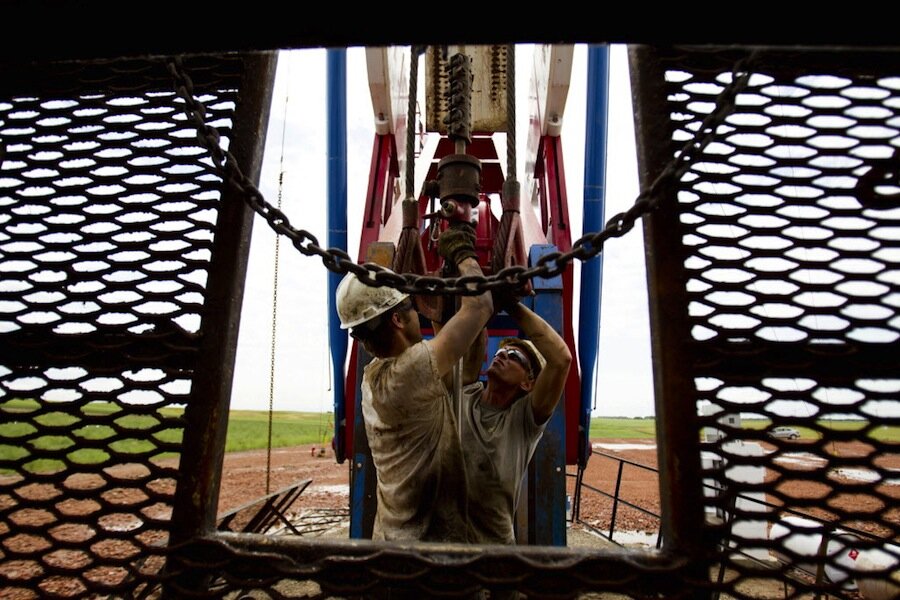Saudi Arabia continues to turn the screws on US shale
Loading...
Saudi Arabia continues to ratchet up production, taking market share away from US shale producers.
According to OPEC’s latest monthly oil report, Saudi Arabia boosted its oil output to 10.31 million barrels per day in April, a slight increase over the previous month’s total of 10.29 million barrels. That was enough for the de facto OPEC leader to claim its highest oil production level in more than three decades.
Saudi Arabia has increased production by 700,000 barrels per day since the fourth quarter of 2014 in an effort maintain market share. The resulting crash in oil prices is forcing some production out of the market, and Saudi Arabia intends for the brunt of that to be borne by others. (Related: California’s Climate Goals: Realistic Or Just Wishful Thinking?)
There is a lag between movements in the oil price and corresponding changes in production. OPEC says there was a 23-week time lag between the fall in rig counts and the resulting dip in oil production in the United States. But the effects of the oil price crash are now being felt. New data from the EIA says that US oil production is declining. Having already predicted a 57,000 barrel-per-day decline for May, the agency now says that another 86,000 barrels per day in output will vanish in June.
In other words, as Saudi Arabia ramps up, US shale is being forced to cut back. This story has been told many times over the past few months, but the data is finally confirming the success of Saudi Arabia’s strategy, albeit a minor one thus far.
But at the same time, Saudi Arabia’s (and OPEC’s) influence is much more limited than it was in the past. Despite Saudi Arabia producing at its highest level in more than 30 years, oil prices have climbed back from their lows. WTI has jumped more than 36 percent since March, now trading above $60 per barrel. Brent has surpassed $66 per barrel, up more than 26 percent in two months. That is obviously good for Saudi Arabia, but oil prices may not have stayed low enough to do real, lasting damage to US shale. (Related: Oil Rigs Down Almost Universally)
The rise in oil prices came despite Saudi Arabia’s best efforts at flooding the market. There are several reasons for this. First, demand is starting to kick back in, which is soaking up some of the extra crude flowing around. Refinery throughputs are at a three-month high, with 92 percent of refining capacity in use.
A few other contributors to higher oil prices came in the form of a stronger-than-expected economic performance in Europe, as well as monetary stimulus in China. Both of those developments indicate stronger demand for oil in the months ahead. OPEC forecasts demand for 2015 to rise by 1.18 million barrels per day, an upward revision from previous estimates, and a higher rate of growth from last year’s 0.96 million-barrel-per-day increase.
Another reason for higher prices is that the US dollar has weakened a bit, and since oil is priced in dollars, a weaker dollar translates into higher prices.
Also, on the supply side, until May US producers managed to steadily increase output, achieving gains in efficiency that kept production flowing even though rigs fell out of service.
Nevertheless, Saudi Arabia may still have the upper hand. Oil inventories in the US are still at 80-year highs, which should keep a lid on prices. That will continue to inflict damage on US drillers. Several companies have declared bankruptcy, the latest being American Eagle Energy Corp., a Colorado driller. More could soon be coming. Some companies have hedged their production in order to protect themselves from the downside of oil prices. But as those positions expire, more will become exposed to low oil prices. (Related: How Much Longer Can The Oil Age Last?)
OPEC and the International Energy Agency project that global oil production is still 1.5 million barrels per day higher than consumption. The glut isn’t over yet.
Moreover, hedge funds have piled into long positions on crude oil. The record level of bullish bets on oil prices suggests that oil has been pushed higher by speculation. That means that a correction could push prices back down, as has happened in the past.
In summary, while foregoing price targets, Saudi Arabia has managed to maintain its market share throughout the oil bust, with adjustment coming from higher cost producers. That’s exactly what it set out to do.
By James Stafford of Oilprice.com
More Top Reads From Oilprice.com:
- Can Tesla’s Battery System Actually Live Up To The Hype?
- Oil Market Update: $2.1 Billion Noble Deal Could Start A Trend In Shale Sector
- This Tiny Nation Could Have Huge Oil And Gas Potential
Original story: http://oilprice.com/Energy/Crude-Oil/Saudi-Arabia-Continues-to-Turn-Screws-On-U.S.-Shale.html
Source: http://oilprice.com/





